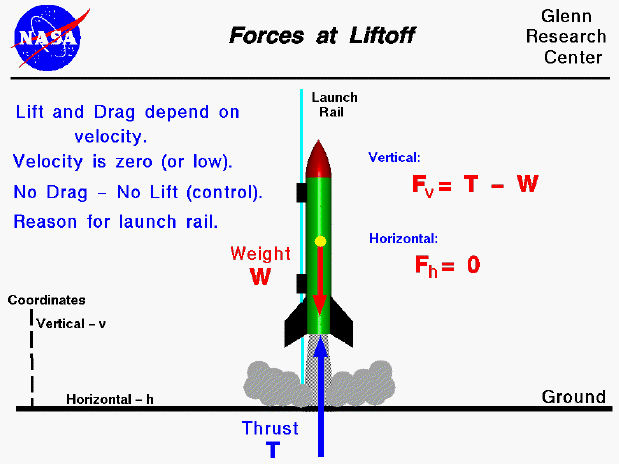

The forces on a model rocket change dramatically in both magnitude and direction throughout a typical flight. This figure shows the forces on a rocket just following liftoff. The only forces present are the thrust T and the weight W. The weight is always directed toward the center of the earth; the direction of the thrust is along the rocket axis. For a vertical launch, the thrust is directly opposite the weight. The acceleration of the rocket during liftoff can be determined by applying Newton's Second Law of Motion and using a little algebra as shown on a separate slide. For a vertical launch, there are is no net horizontal force (Fh) on the rocket and the net vertical force (Fv) is equal to the thrust minus the drag.
Fh = 0
Fv = T - W
Under normal flight conditions, the aerodynamics of the model rocket is used to keep the rocket pointed along the flight path. Since the aerodynamic forces depend on the square of the velocity,, and the velocity is relatively small at liftoff, the magnitude of the aerodynamic forces is also small. With little or no aerodynamic forces at liftoff, the rocket cannot be controlled. To provide some control at low speed, model rockets are launched along a launch rail. The rail is inserted into the launch lug which is a small tube along the side of the rocket. During liftoff, the rocket moves in the direction of the rail. During the remaining powered flight, the aerodynamic forces are sufficient for control. But the thrust must now overcome both the weight and the drag of the rocket.
Go to...
byTom
Benson
Please send suggestions/corrections to: benson@grc.nasa.gov